First Access
OIBus configuration interface is available on http://localhost:2223.
By default, the user is admin and the password is pass.
We strongly advise to change the password in the user settings.
Home Page
The OIBus home page shows enabled connectors and the engine with their associated metrics.
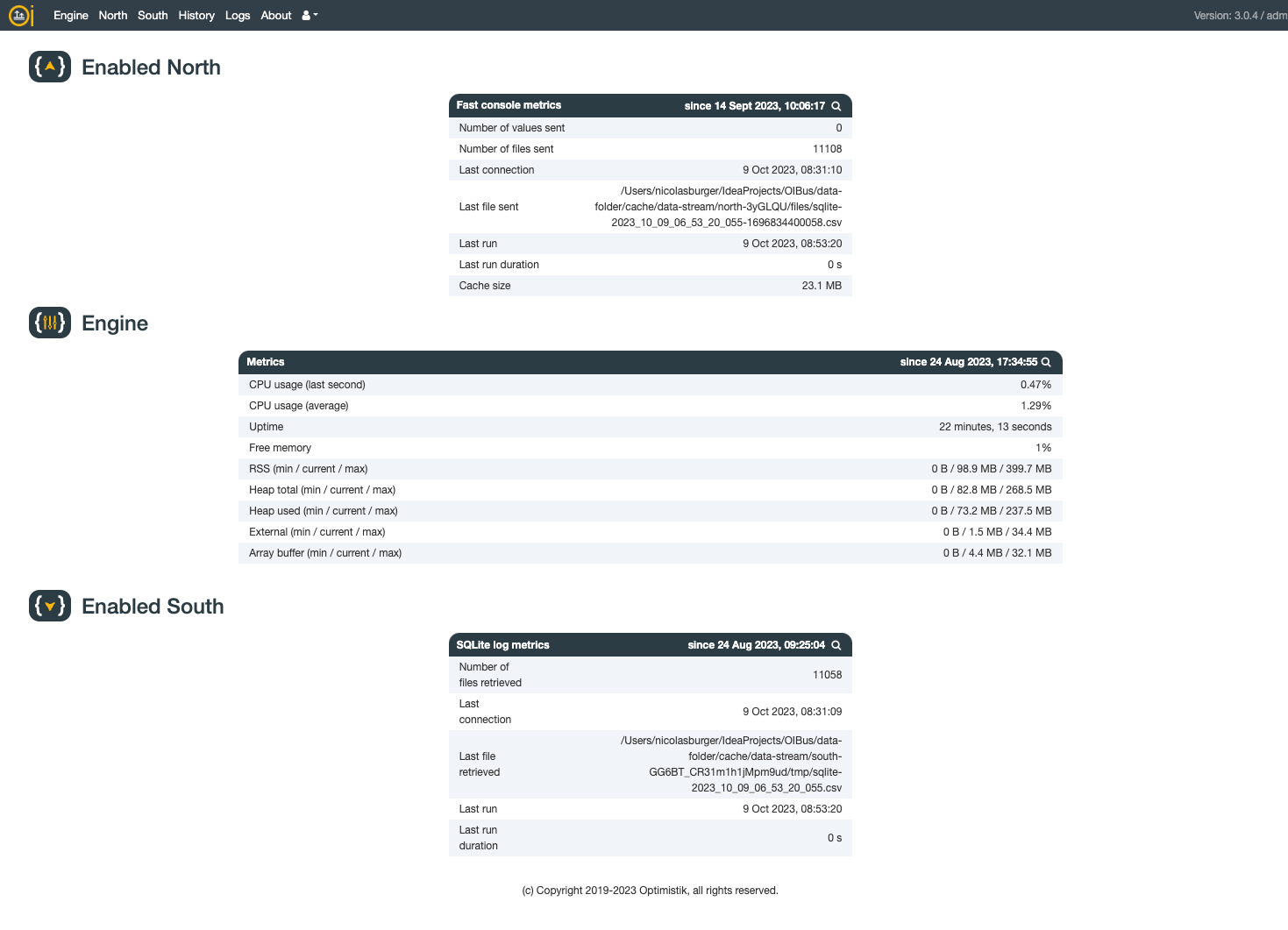
The magnifying glass icon redirects you to the display page of the connector or of the engine.
Engine
The engine page allows you to set logging parameters, Scan Modes and IP Filters.
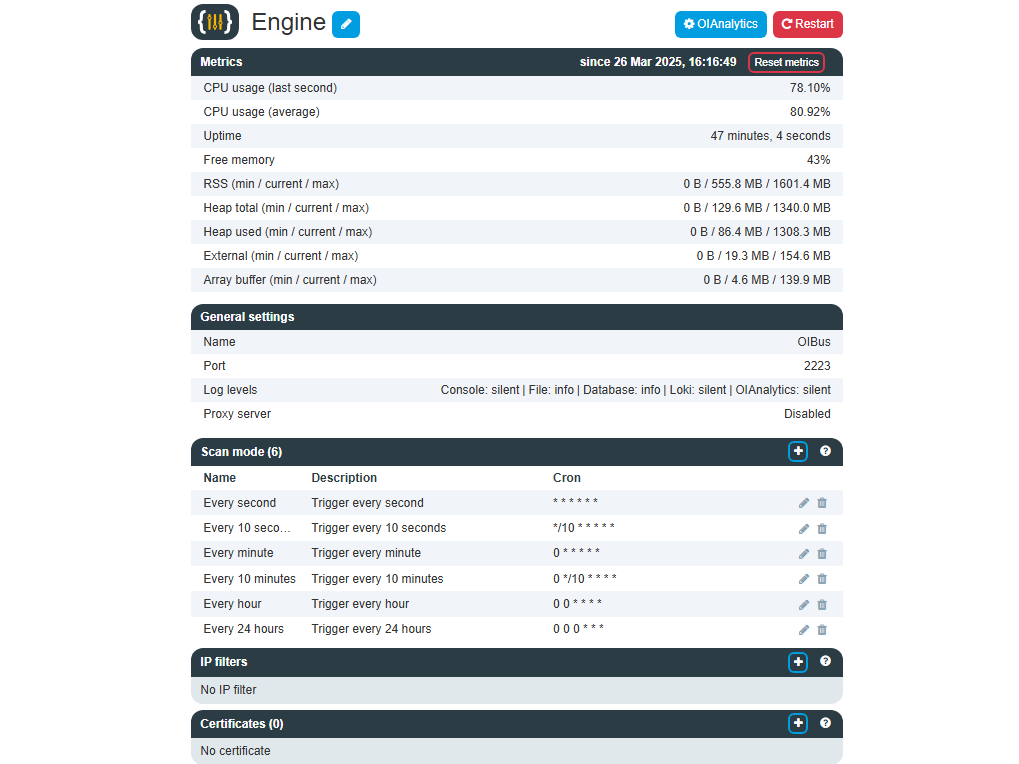
The restart button and the shutdown button affect the engine only, not the service. It means it will shut down the connectors, but not the web service, which allows you to still access the OIBus interface.
If you want to automatize the setup of OIBus, and access it remotely, you can send a curl command to accept connection from various IP addresses. Here is an example that accepts all IP addresses.
curl --location --request POST "http://localhost:2223/api/ip-filters" \
--header "Content-Type: application/json" \
--data-raw '{"address": "*", "description": "All"}' \
-u "admin\:pass"
Engine Metrics
These metrics provide insights into the resource usage and performance of the OIBus process:
| Metric | Description |
|---|---|
| CPU usage | Last second: 78.10% (instantaneous), Average: 80.92% (over time) |
| Uptime | 47 minutes, 4 seconds (duration the process has been running) |
| Free memory | 43% (available system memory) |
| RAM usage | min: 0 B / current: 555.8 MB / max: 1601.4 MB (process memory in RAM) |
| Heap total | min: 0 B / current: 129.6 MB / max: 1340.0 MB (memory allocated for heap) |
| Heap used | min: 0 B / current: 86.4 MB / max: 1308.3 MB (actual memory in use) |
| External memory | min: 0 B / current: 19.3 MB / max: 154.6 MB (memory for native extensions) |
| Array buffer | min: 0 B / current: 4.6 MB / max: 139.9 MB (memory for binary data) |
North Connectors
To add a North connector, simply click the "+" button.
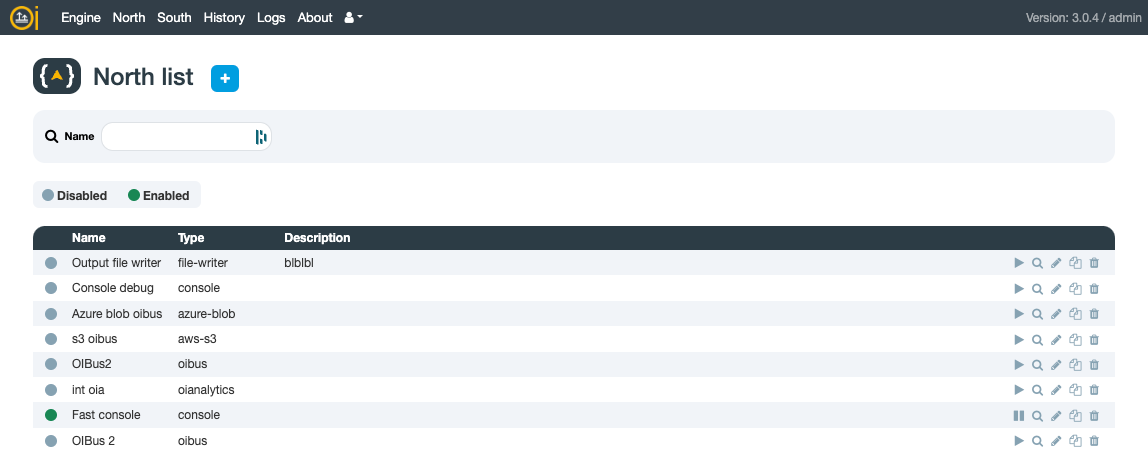
On the list's right-hand side, you have options to:
- Activate/deactivate a connector
- Access its display page or editing form
- Create a duplicate
- Delete it
South Connectors
To add a South connector, simply click the "+" button.
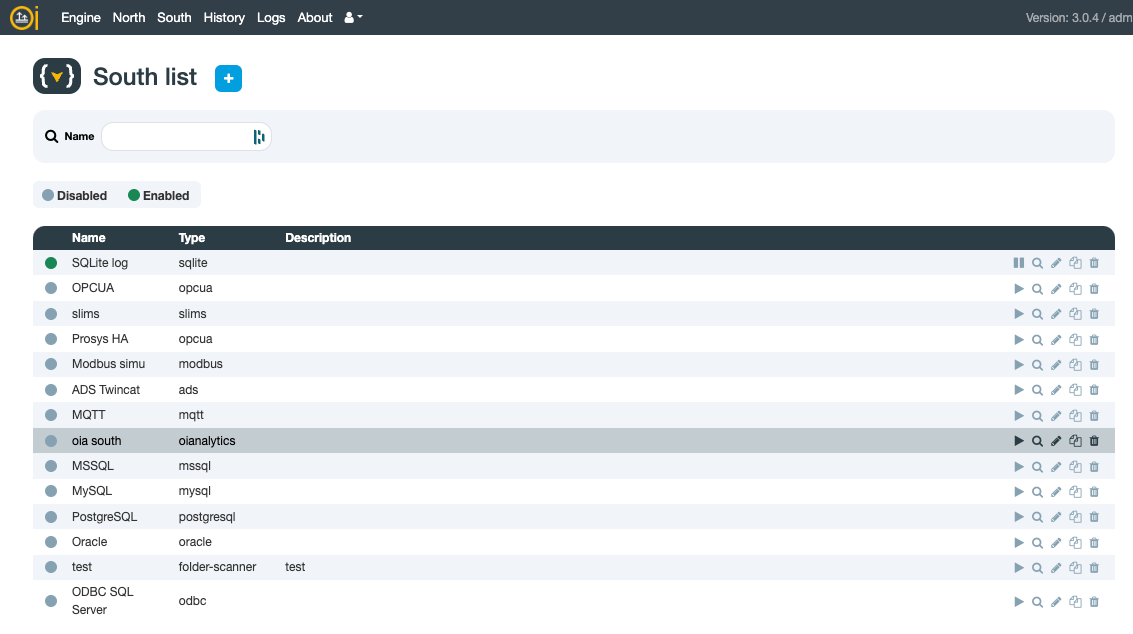
On the list's right-hand side, you have options to:
- Activate/deactivate a connector
- Access its display page or editing form
- Create a duplicate
- Delete it
History Queries
To add a History query, simply click the "+" button.

On the list's right-hand side, you have options to:
- Activate/deactivate a query
- Access its display page or editing form
- Create a duplicate
- Delete it
Logs
The log page automatically refreshes every 10 seconds.
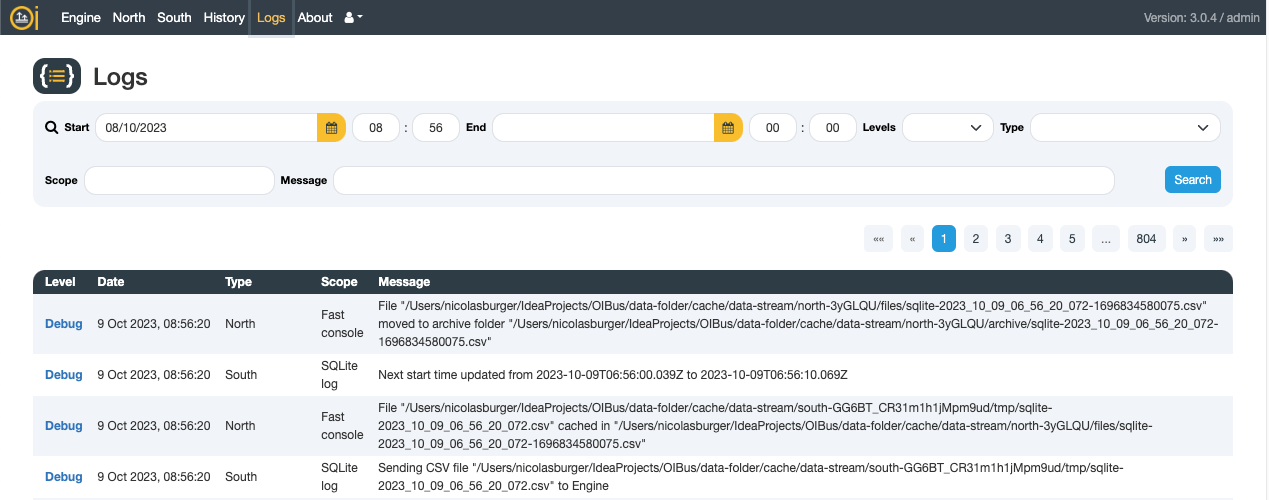
Filter logs by:
- Dates
- Log level
- Log type (South, North, engine, etc.)
- Scope (connector/history query)
- Message content
About
Information about the OIBus process and link to the documentation.

User Settings
Modify your password and select the timezone for date displays.
